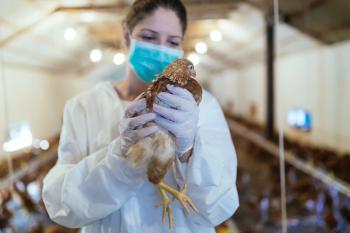
Community Education of Respiratory Infection Vaccines
Jacinda Abdul-Mutakabbir, PharmD, comments on building trust with community members and educating people about respiratory infection vaccines.
Episodes in this series

Tina Tan, MD: JAM [Jacinda], in your situation where you’re working with some of the communities that have disparities and they’re not able to access these things readily, what has been your experience when you go out there and try to offer vaccines to them? Because we know that in the Black and brown communities, there’s a lot of distrust with regard to vaccines and they don’t want to receive these vaccines. What has been your message?
Jacinda Abdul-Mutakabbir, PharmD: Thank you for that question, Tina. When I started this work, which was not work that I knew I would be involved in as heavily as I am now, and with me being a Black woman, I knew there would be hesitation with the vaccines because I also hesitated when it came time to receive the vaccines. Some of the reasons are systemic and structural racism, mistreatment by the US health care system, and poor public health communication. I was a bit leery, so I did some education for myself. I evaluated the literature, and I then took this information and tried to make it something that was easily translated and something that the Black community could easily receive. I did this first translation of the information with a group of ID [infectious disease], PharmD friends. Long story short, I ended up heavily embedded in our processes at Loma Linda [School of Pharmacy]. We are continuing this work, but now I’ve moved and work solely with the churches we collaborated with. It was really important to identify the fact that I’m not the only trusted messenger.
I think where Priya talked about pharmacists being integral because of the relationship that public health may have with the community, or that the public may have with physicians and other higher level providers, when it comes down to pharmacy or pharmacists, at the end of the day, the public looks at us all the same. It’s more, “You all, or those who are a part of the infrastructure, the health care system, have not done right by us, so now we’re hesitant.” I had to understand that faith and community leaders are those trusted messengers within those communities. Faith and community leaders are how we were able to gain the trust and access to the community. Those have become my major collaborative partners, but then also thinking about it from a behavioral standpoint. When we think about vaccines, when we think about testing, it’s behavior more than it is the belief in science. We have to think about the attitudes and how it is that we change those attitudes. My partners in this research are behavioral scientists because that’s important. I try to approach it from that end, but I mind my role and take heed to what it is that they provide in guidance.
Also I think about it from the perspective of I know that I’m here as someone who has to provide knowledge, so we rely heavily on education. We educate before we vaccinate. Previously we did this through the availability of webinars. We would do a webinar before we would do every vaccination clinic. The great thing is now we are moving more to in person, so we do in-person town halls where we talk about these major communicable diseases and vaccine prevention, and not just for COVID-19 specifically. Now we’ve added influenza, monkeypox, etc, to make this a sustainable model. But when we provide that education, we have a vaccine clinic right after. We are creating this infrastructure for providing information to the community, but also doing it in a way that integrates all of the trusted messengers who will be important in decision-making. Then we bring the vaccines right there in a low-barrier format to the community. We try to hit every single point of limitation that we can see.
Transcript edited for clarity
Newsletter
Stay ahead of emerging infectious disease threats with expert insights and breaking research. Subscribe now to get updates delivered straight to your inbox.



























































































































































































































































































































